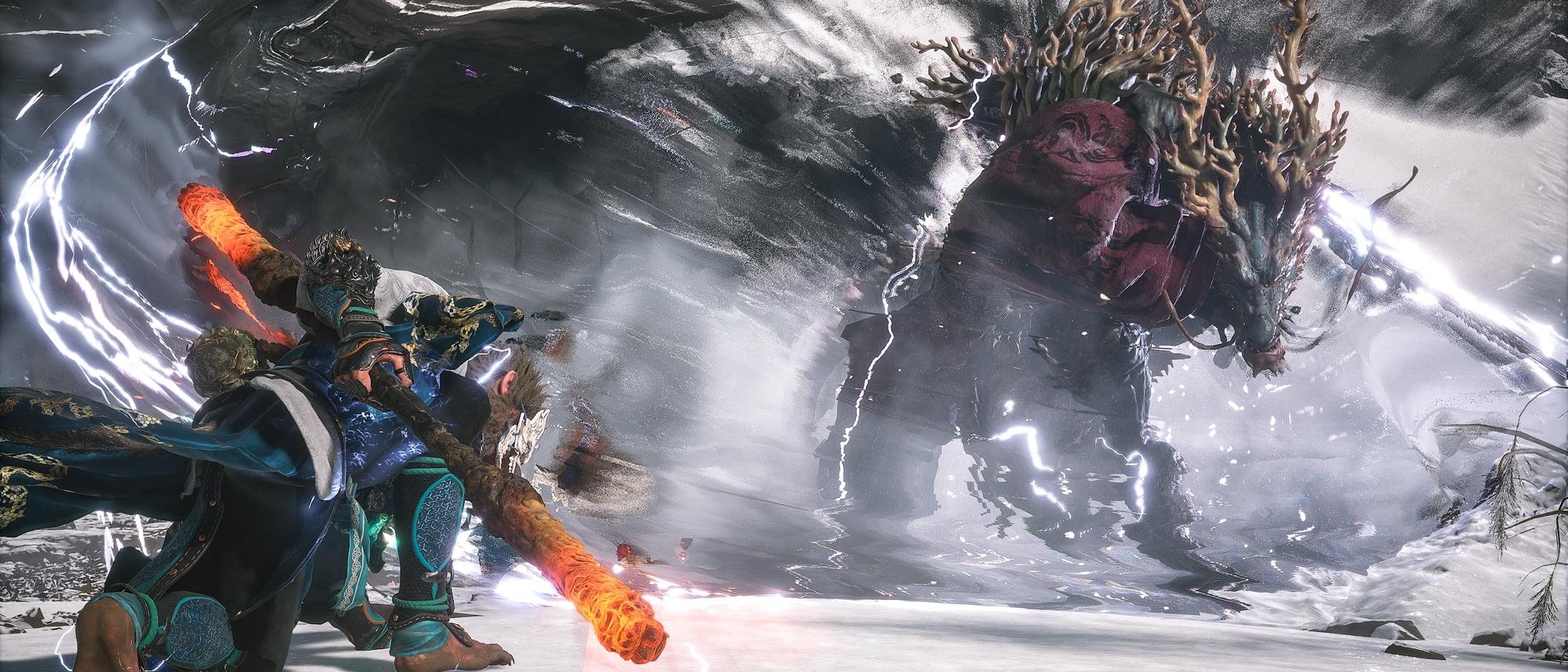Tom's Guide Verdict
Black Myth: Wukong features stunning graphics, engaging mechanics and an imaginative setting. However, it's bogged down by odd level design choices and a few technical hiccups. Despite its faults, it's a solid action RPG that fans of the genre will enjoy.
Pros
- +
Jaw-dropping visuals
- +
Engaging combat mechanics
- +
Intuitive skill tree
- +
Unique setting
Cons
- -
Invisible walls
- -
Random glitches
- -
Confusing narrative
Why you can trust Tom's Guide
Platform: PC (reviewed), PS5
Price: $59
Release date: August 20, 2024
Genre: Action-adventure, RPG
Black Myth: Wukong is an enjoyable experience that narrowly misses perfection. Steeped in Chinese mythology, this action-adventure game from developer GameScience features stunning graphics, thrilling gameplay and imaginative boss battles. Unfortunately, an abundance of invisible walls, a confusing plot and technical issues hurt the overall package.
I’ve looked forward to Black Myth: Wukong ever since its announcement back in December 2020. The Unreal Engine 5-powered graphics and over-the-top boss battles caught my attention but I was also interested to see how a “AAA” game from a Chinese developer would differ from the Western and Japanese titles I’m used to. Though it certainly has its own flavor, Wukong misses the mark for the reasons I outlined above.
Black Myth: Wukong might not be on par with God of War: Ragnarok, but its best aspects make it worth checking out if you’re a fan of like-minded action games. Find out why in my full review.
Black Myth: Wukong: The basics
- What is it? Black Myth: Wukong is an action-adventure RPG set in ancient China. You play as protagonist Sun Wukong, who must go on an adventure to save the land.
- Who is it for? For fans of action RPGs and action-adventure titles.
- How much does it cost? Black Myth: Wukong costs $59 on both the PlayStation Store and on Steam. There is no "physical" copy of the game, as even the retail box only comes with a code instead of a disk.
- What other games has the developer made? Black Myth: Wukong is GameScience's first console and PC game. Prior to that, the studio worked on mobile games.
- What games is this similar to? God of War, Bayonetta, Devil May Cry and Ninja Gaiden. Though Wukong can be challenging, it's not a "Soulslike."
A mythical journey
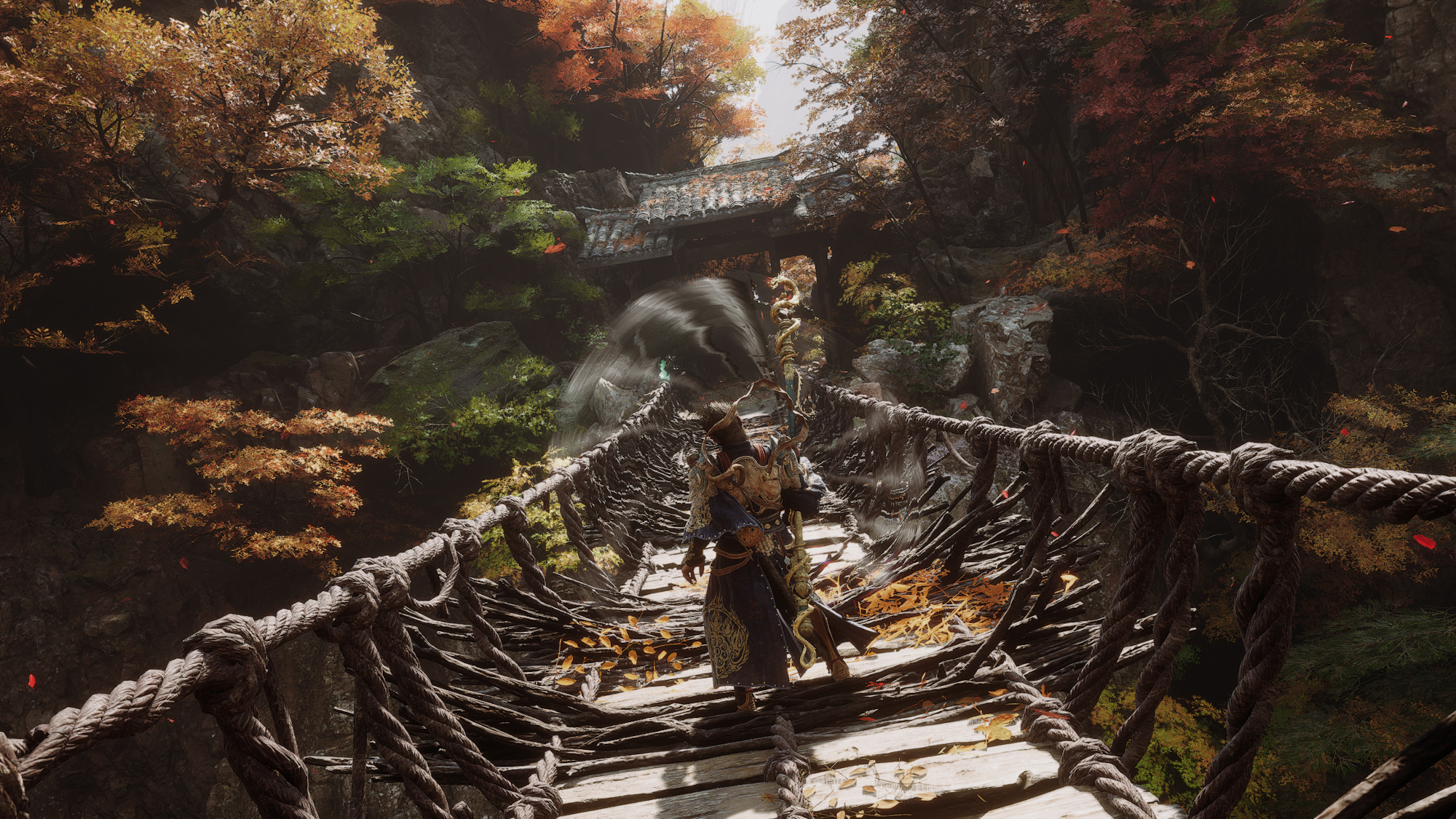
One of Black Myth: Wukong’s main selling points is that it’s based on the classic Chinese novel, Journey to the West. Though that aspect lends this game a unique visual style (more on that in a bit), it doesn’t do much if you’re unfamiliar with the source material. It can actually make the game’s plot downright confusing at times.
The gist is that you’re an anthropomorphic monkey who is the descendant of Sun Wukong, or the Monkey King. You’re tasked with collecting six magical artifacts so you can unlock the powers of your legendary descendant and restore order to the chaotic land. To do so, you’ll have to fight a lot of yaoguai (monsters) along the way.
That’s about what I understood from the plot. I’ve never read Journey to the West and I know next to nothing about Chinese mythology and spiritualism. Due to that, many of the plot points and speeches from bosses went over my head. The fact that the latter tend to speak poetically only serves to heighten the confusion. I won’t call this a deal-breaker (I can make more sense of this plot than Elden Ring’s), but it almost made me want to skip cutscenes so I could get to the next action set piece.
The art of war

Though Black Myth: Wukong’s story might not make a lot of sense, its combat mechanics are straightforward and intuitive.
At its core, battles consist of you wailing on enemies with light attacks while dodging their counter-attacks. Successful light attacks build a meter for heavy attacks, which naturally dish out more damage. This gives battles a strategic nature since you’re building toward landing heavy attacks when there’s an opening. The aggressive enemies (especially bosses) force you to dodge almost constantly, which can make certain battles feel like a dance. Different stances earned throughout the game have specific heavy attacks, which work best against certain foes.
In addition to melee attacks, you can also use magic spells earned during the journey. My personal favorite has you calling up a small army of clones that do a great job of pestering baddies. Other abilities like freezing an enemy in place or morphing into a wolf with a fire staff are also useful. However, you can’t spam magic attacks since they have cooldown times and drain mana. Knowing when to use magic to give you an edge also provides a great deal of strategy to the game's battles.
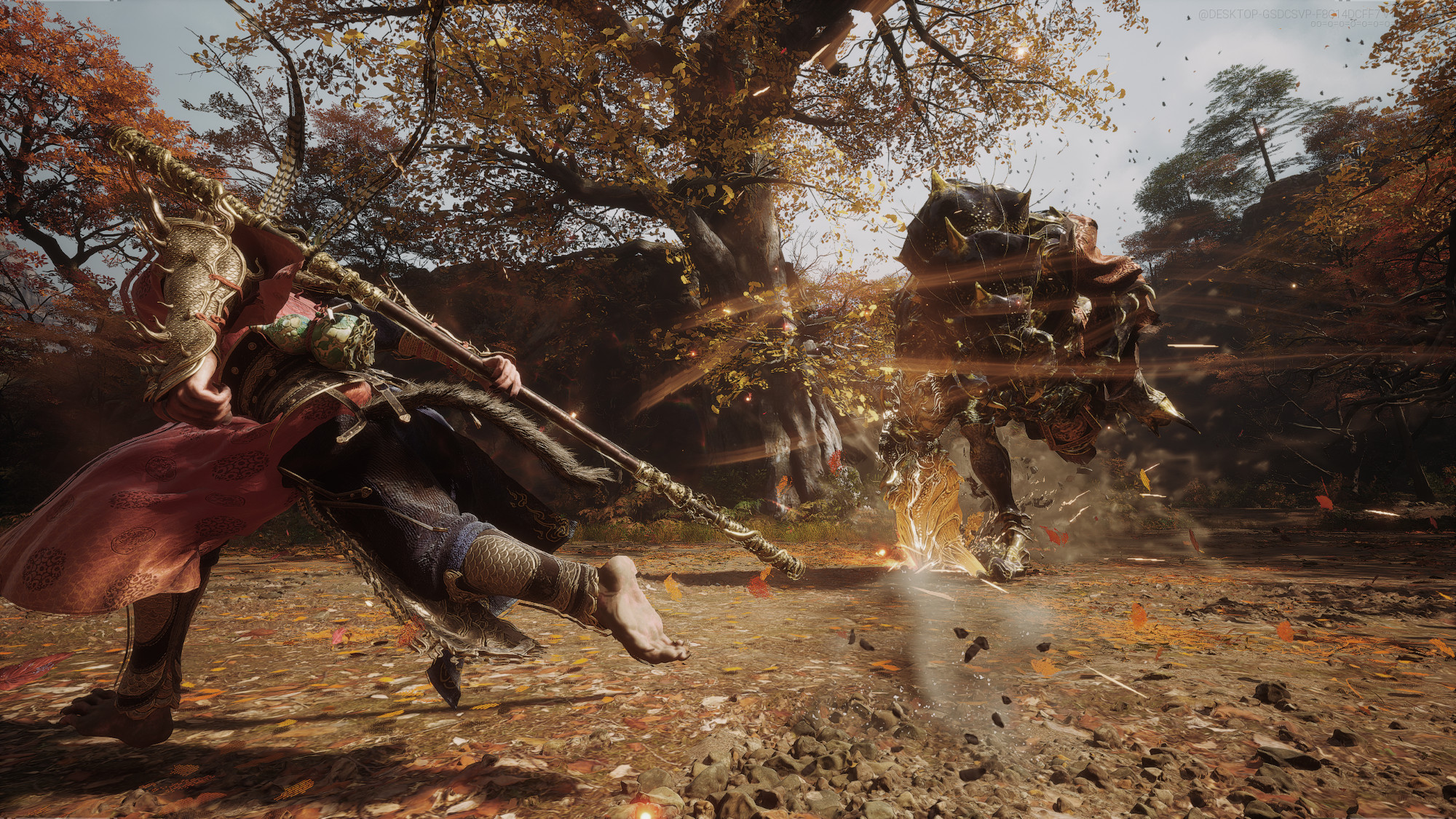
The aforementioned wolf isn’t the only creature you can transform into. After defeating certain foes (which usually have a blue glow around them), you can absorb their essence and become them for a brief period (usually a single devastating attack). Morphing into a giant frog to slap enemies with an elongated tongue (for instance) is both useful and fun. There are a bunch of enemies you can transform into, so it’s good to experiment to see which are best for a given situation.
Defeating opponents earns you experience points. After acquiring enough experience, you’ll gain skill points which you can then use to unlock new abilities on the skill tree. You can unlock new or more powerful attacks and spells, enhance your health and mana reserves, and more. The game is pretty generous with skill points (which you can also earn by resting at meditation spots or completing side quests), so you’ll always have new abilities to unlock.
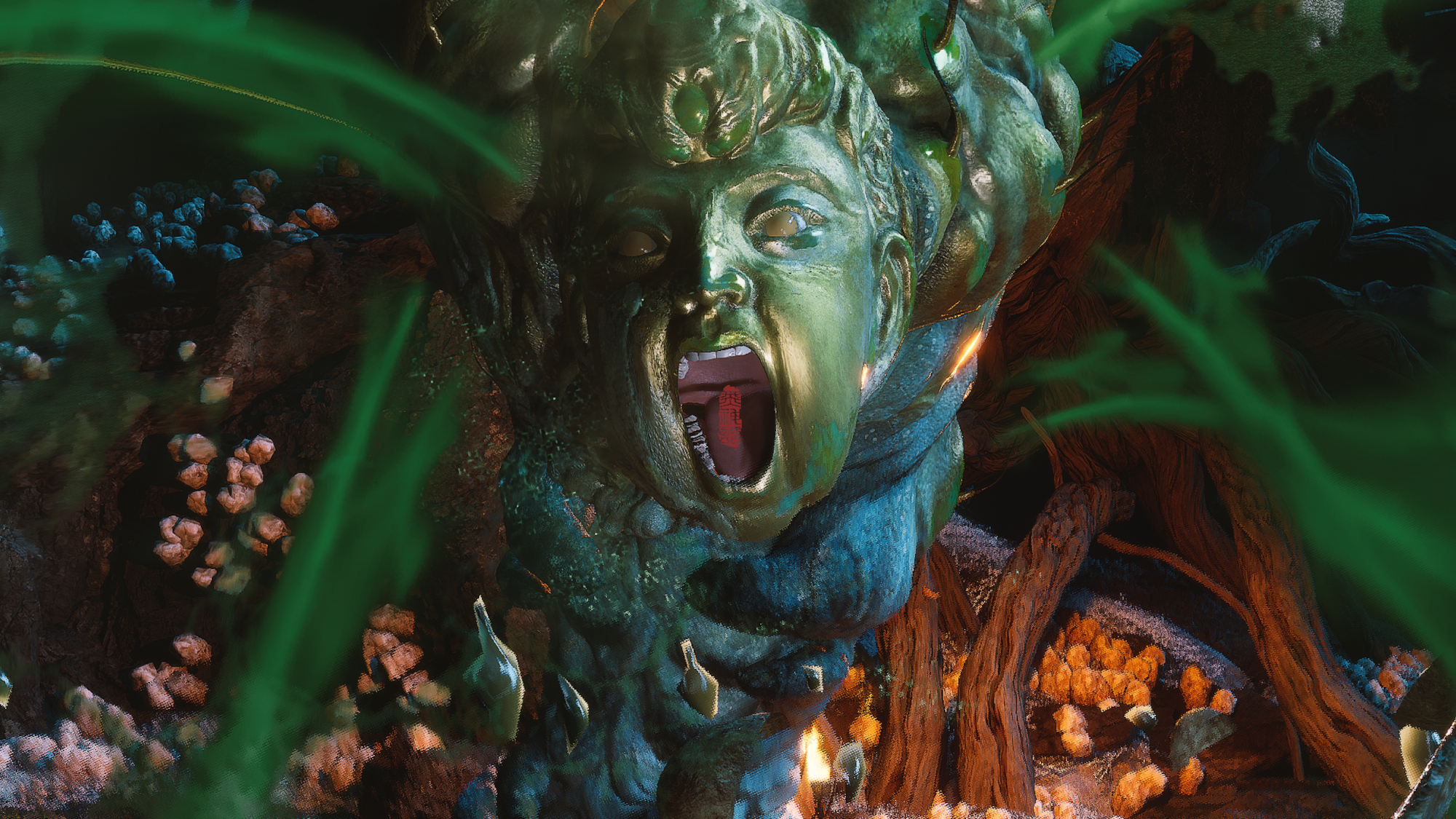
Shrines scattered throughout the environment serve as checkpoints. They also let you swap out spells (you can only have four at a time), purchase or upgrade your armor and staff, craft healing and buff potions, and more. Several creatures sell or upgrade items as well. It’s always a good idea to visit shrines to mix up your repertoire of skills and spells, especially if you’re having problems with a particular boss.
Bosses in Wukong aren’t as tough as in FromSoftware’s titles (like Dark Souls and Elden Ring), but they’re not pushovers either. To win, you’ll need a mix of fast reflexes and a judicious use of magical abilities. Make no mistake, you’re going to lose. A lot. But the satisfaction felt after finally defeating a boss makes up for the annoyance. Plus, it’s hard to stay frustrated when nearly every boss encounter is a highlight.
A mystical land
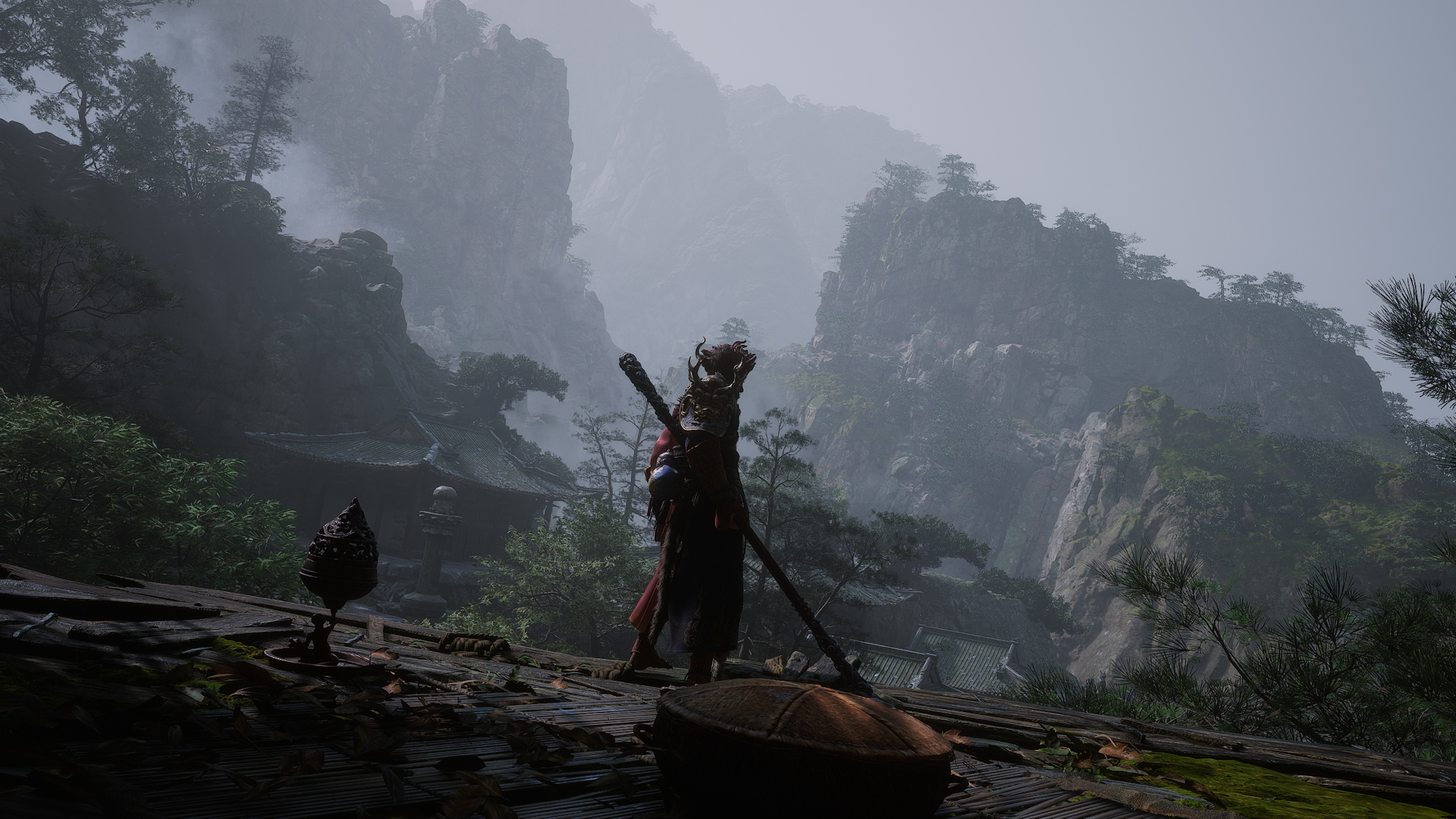
Black Myth: Wukong is one of the most visually stunning games released in recent years. Utilizing the power of Unreal Engine 5, every single environment — from dense forests to snow-covered mountains — looks absolutely phenomenal. Architecture, landscapes and creatures all come to life in vivid detail.
The mythological Chinese setting also adds to the game’s visual flair. Ancient temples, gargantuan statues, brazier-lit cavern dwellings and more make you feel like you’ve stepped into another world. When combined with the sharp fidelity, you get a truly unique visual experience.
The vast environments beg you to explore them. And sure enough, going off the beaten path often yields rewards in the form of treasure, side quests, mini-boss battles and such. Unfortunately, there are far too many invisible walls preventing you from exploring everything.
Most modern games do a decent job of placing barriers you can’t overcome, so it’s surprising that Wukong has the kind of invisible walls so prevalent in games from 15 years ago. It’s a design choice that hurts immersion. The fact there’s no map showing you the environments’ limits only makes things worse.
A splintered staff
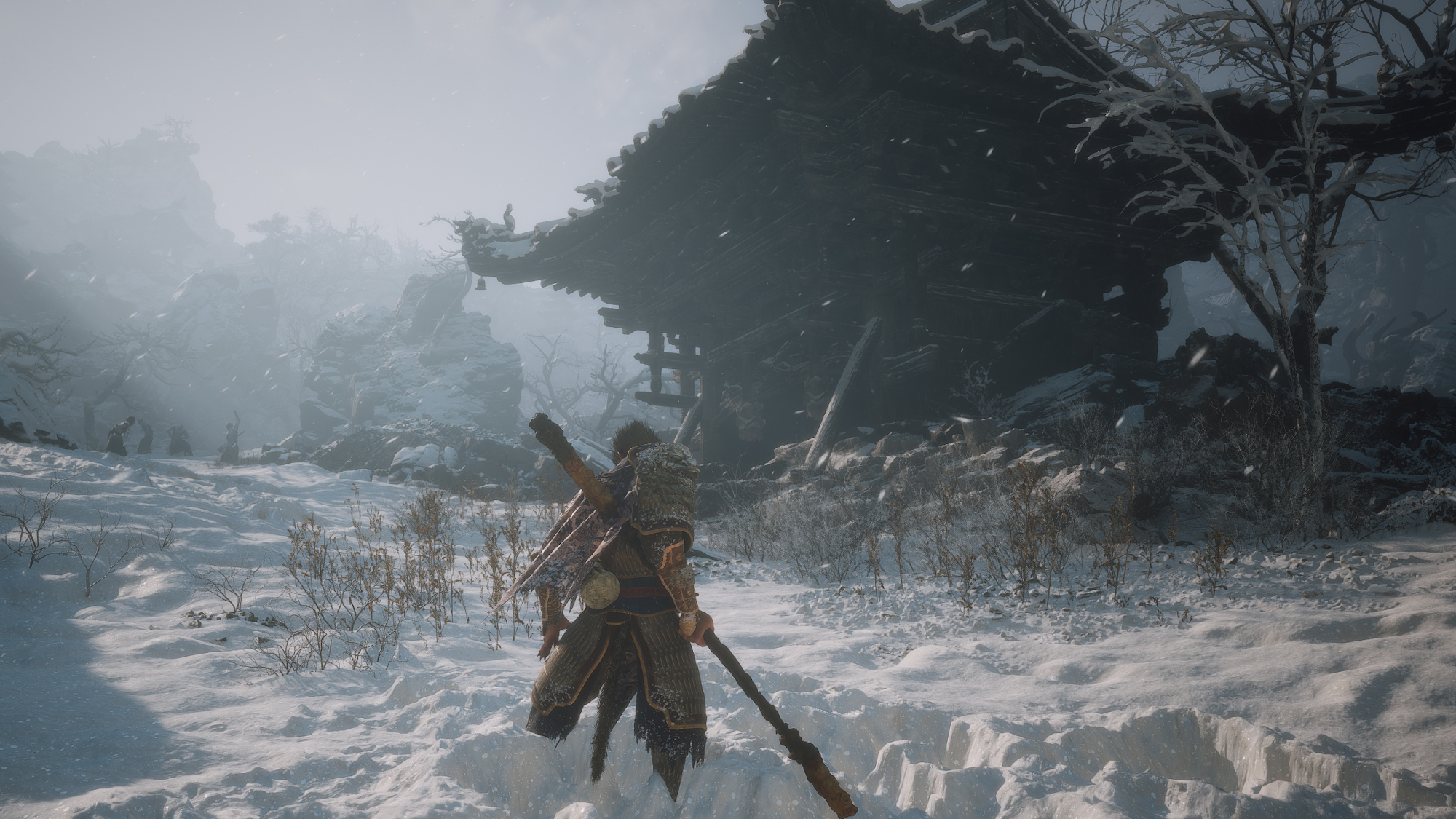
I played Black Myth: Wukong on my gaming rig, which packs an Nvidia GeForce RTX 3080 Ti GPU, 32GB of RAM and an 11th Gen Intel Core i7 CPU. For the most part, my desktop didn’t struggle running the game at 1440p resolution at a relatively steady 60 frames per second with the graphics set to high. While my PC has (mostly) higher-than-recommended system specs, the experience wasn’t always smooth.
The game stutters during long sessions. Restarting helps, suggesting a memory leak. I also experienced minor bugs, such as audio randomly switching between English and Chinese. Hopefully, GameScience can remedy these two problems with a patch.
A promising start
Black Myth: Wukong isn't perfect but it's still impressive, especially given how it's GameScience's first big-budget game. If you're a fan of God of War or Ninja Gaiden, then you'll appreciate what this game brings to the table. However, don't expect the depth of combat seen in a FromSoftware title.
I hesitate to call Black Myth: Wukong one of the best PC games, but it certainly does justice to its genre.

Tony is a computing writer at Tom’s Guide covering laptops, tablets, Windows, and iOS. During his off-hours, Tony enjoys reading comic books, playing video games, reading speculative fiction novels, and spending too much time on X/Twitter. His non-nerdy pursuits involve attending Hard Rock/Heavy Metal concerts and going to NYC bars with friends and colleagues. His work has appeared in publications such as Laptop Mag, PC Mag, and various independent gaming sites.
-
tonystory3 His first opening line of this article 'Black Myth Wukong narrowly misses perfection'.... goes on to give it 3 1/2 stars. Make it make sense.Reply -
ChronicBurnout3 "Misses the mark" to the tune of nearly 400,000 overwhelmingly positive (96%) reviews on Steam. Tony I'm sorry you didn't like the game, but sometimes you have to zoom out and see the big picture, this could easily win GOTY. I'm sorry it was confusing to you, but maybe show some cultural sensitivity here and don't act like an entitled Western game journalist. Do you think a person who grew up in mainland China finds God of War to be an accessible narrative with easily digestible lore?Reply
I'm sorry this game pushed you out of your comfort zone, but maybe consider not everything in a work is meant to be understood, all at once, in the single week you have to cram in playing it and write a review. Some works, many of the great ones historically, can only be fully understood after experiencing them multiple times, when you have the time to consider and digest all of their aspects and disparate parts. Just because something doesn't pander to exactly how you want it to be made and presented, doesn't mean it is flawed or incoherent.
